We are now entering a major section of the immune system, all the parts behind the job and their purposes. Here, we will examine specifically what the immune system does and how all these parts work together to become one.
Parts and Purposes
White Blood Cells

White Blood Cells: Known as the immune system’s army, white blood cells defends the body against infectious organisms and foreign substances. These "key players" each have a specific role or immune function in the human body. There are 6 different types of white blood cells, which are classified and split into 2 categories, granulocytes and agranulocytes. White blood cell’s main goal is to circulate the bloodstream, attacking invading bacteria, parasites and any other object not meant to be inside the body.
Phagocytosis
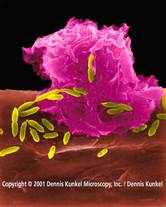
Phagocytosis: When large particles are taken into the cells by endocytosis, this process is called phagocytosis (extensions of cytoplasm). Endocytosis, or a certain kind of active transport, is the process of taking material into the cell by the means of pockets of the cell membrane. In phagocytosis, the surrounding and engulfing of large particles takes place.
Antigens
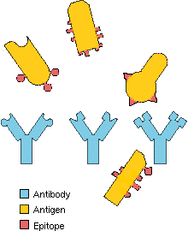
Antigens: If the "bad guys" of the body, or pathogens, are able to get through, the "fortress wall" reacts with a series of specific defenses like sending out the body’s "security guards" that attack the pathogens. This is called immune response. A substance that triggers this response is called antigens. Basically, antigens are a substance that when introduced to the body, it creates the production of antibodies. Some examples of antigens that trigger antibodies are toxins, bacteria and foreign blood cells.
Antibodies
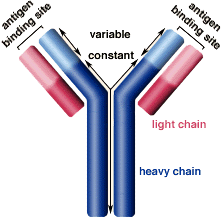
Antibodies: Antibodies, are a protein that helps destroy pathogens, and help fight bacterial infections. Antibodies are shaped like the letter "Y", with two identical antigen-binding sites, which allows antibodies to stick to the two antigens. It works like this: say that antigens are a protein found on a surface on flu viruses, so each flu virus particle are covered with antigens. By attaching to viral antigens, groups of antibodies can link viruses into a clump. Then, phagocytes engulf the mass, destroying and preventing any infection from spreading.
Pathogens
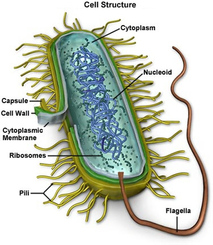
Pathogens: Pathogens are known as "sickness makers" in the body’s immune system. Pathogens, or disease causing agents, such as bacteria, carry infectious diseases. If a bacterium releases toxins into the body, it produces illnesses, which destroy blood and nutrients feeding on the inside of the body. Some examples are: virus, bacteria and worm infections like influenza, tetanus, and beef tape worm.
Pathogens vs. Antibodies
In this 3D medical animation, it shows how antibodies stop dangerous disease carrying pathogens from entering the bloodstream and attaching themselves to healthy cells. This animated clip starts by showing normal white and red blood cells in the bloodstream, carrying out their daily jobs of delivering nutrients and fighting of infectious diseases in the body. Then, on a surface of a cell, a pathogen or "bad guy" appears. The little tubes that appear on the pathogen are surface proteins, which help it attach to matching surface proteins on the white blood cell. When the animated clip continues on, more pathogens continue to attach themselves to the white blood cell, but are not effective. Throughout this immune response, the brain tell the body to send out antibodies, which attack the pathogen. The antibody is able to bind to the surface due to its "Y" shape, making the pathogen struggle as it tries to attach itself to the blood cell. However, the antibody blocks the pathogen, "tagging" the pathogen so that another immune system cell, in this video called a "macrophage", can engulf and digest the "bad guy".
Passive Immunity
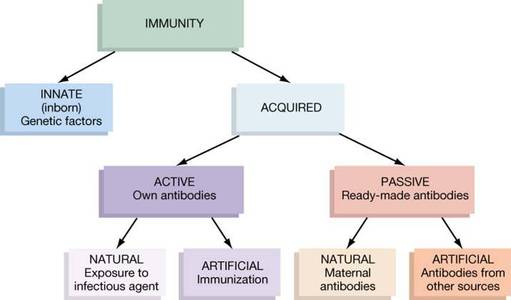
Passive immunity is the process of giving immunity by way of antibodies produced by alternate or foreign systems. This requires work from the individual immune system. Passive immunity is also known as when antibodies, produced by other animal or human in order to fight off a pathogen, are injected into the bloodstream ( as long as they stay in the circulatory system). One example of when you would receive this in your lifetime, is when travelers are given antibodies against tropical diseases before leaving home to a foreign country. Something called maternal immunity is when antibodies from a mother passed to the fetus through placenta or the infant's mother's milk. This helps the child build a temporary immune system against diseases the mother could have had during the pregnancy. Passive immunity is provided by artificial means, like vaccines or injections from an animal or human.
Active Immunity
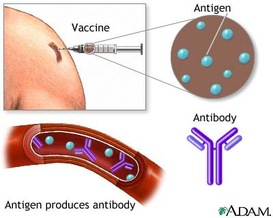
Active Immunity is the immunity produced by a vaccine. When this is happening, the body makes it's own antibodies in response to an antigen. Active immunity can also be explained as the production of antibodies against a specific agent by the immune system. Active immunity can be acquired in 2 ways, by receiving a vaccination or by contracting, or catching, an infections disease. In active immunity, the body of the recipient has the ability to mount an immediate active immunity response against the pathogen. In modern vaccines, they stimulate the immune system to create millions of plasma cells ready to produce specific antibodies.
